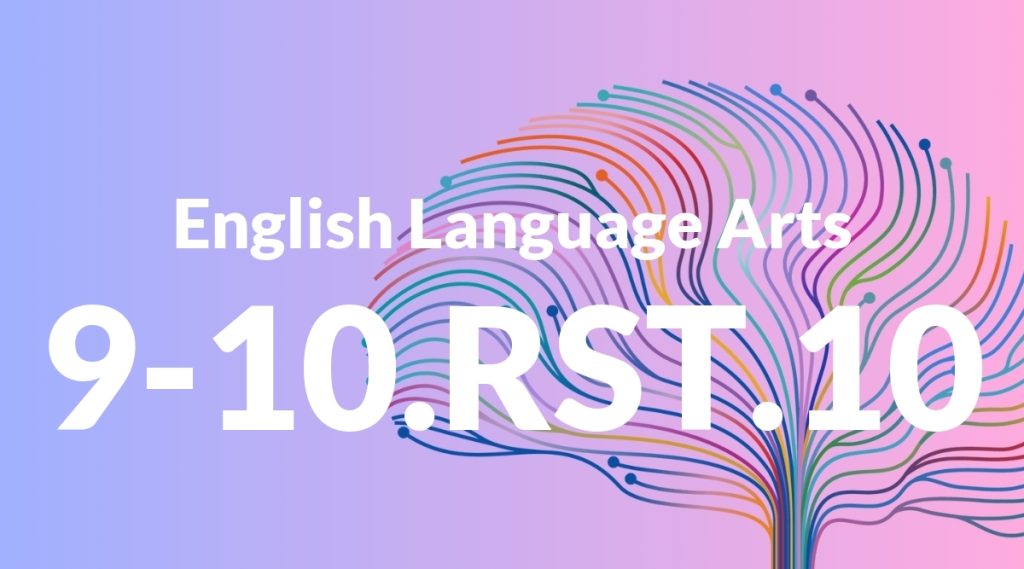Standard: 9-10.RST.10 – By the end of grade 10, read and comprehend science/technical texts in the grades 9-10 text complexity band independently and proficiently.
Grade level: Grade 9-10
Subject: English Language Arts
Domain: Science & Technical Subjects
Teacher Overview
This standard emphasizes the importance of reading and comprehending complex scientific and technical texts independently. Mastery of this skill is crucial for students as it prepares them for advanced studies and careers in STEM fields. By developing these skills, students will be better equipped to tackle real-world problems and engage in lifelong learning. Students should have strong reading comprehension skills and a basic understanding of scientific and technical vocabulary. They should be able to identify main ideas and supporting details and make inferences from context.
After mastering this standard, students will be able to critically analyze and synthesize information from complex texts. This skill is essential for success in higher-level STEM coursework and future careers in science, technology, engineering, and mathematics.
Common Misconception 1
Students may believe that scientific and technical texts are too difficult to understand without prior knowledge. This misconception can discourage them from attempting to read such texts, limiting their exposure to valuable information.
Intervention 1
Introduce students to strategies for breaking down complex texts, such as annotating, summarizing sections, and using context clues to understand unfamiliar terms. Provide guided practice with increasingly challenging texts.
Common Misconception 2
Students might think that they need to understand every single word to comprehend the text. This can lead to frustration and hinder their overall understanding.
Intervention 2
Encourage students to focus on grasping the overall meaning and main ideas of the text. Teach them to use context to infer the meanings of unknown words and to recognize that it’s okay to not understand every single word.
Prerequisite Knowledge
Students should have foundational reading comprehension skills, including the ability to identify main ideas, supporting details, and infer meanings from context. They should also be familiar with basic scientific and technical vocabulary.
Subsequent Knowledge
After mastering this standard, students will be able to critically analyze and synthesize information from complex texts, which is essential for higher-level coursework in science, technology, engineering, and mathematics (STEM) fields.
Instructional Activities
- Annotate a scientific article, highlighting main ideas and key terms.
- Summarize sections of a technical manual in their own words.
- Create a glossary of unfamiliar terms encountered in a technical text.
- Discuss the main ideas of a scientific report in small groups.
- Write a reflection on how understanding a technical document could be applied in real-world scenarios.




